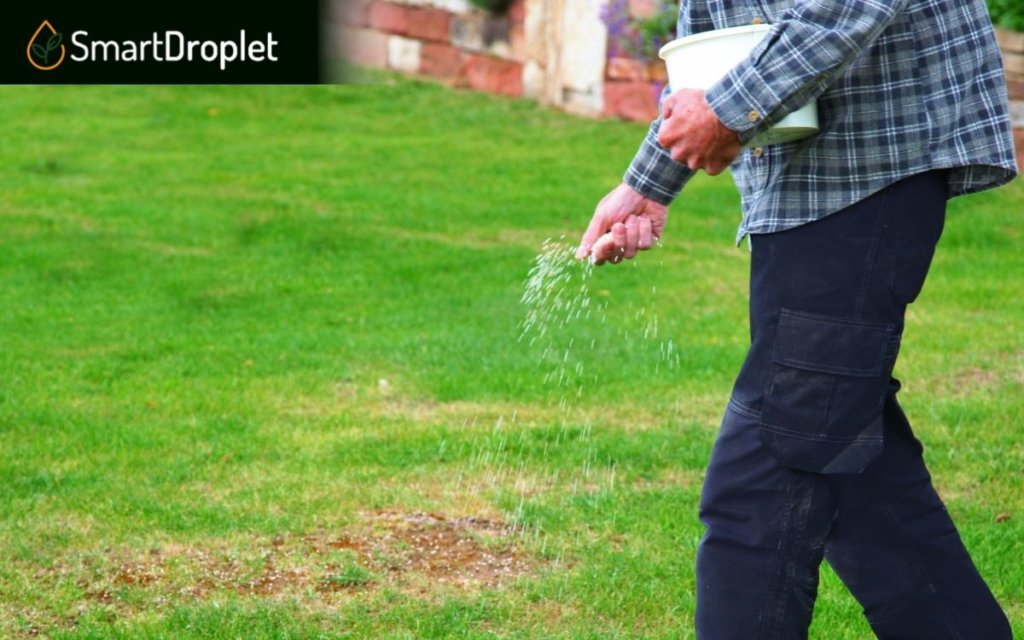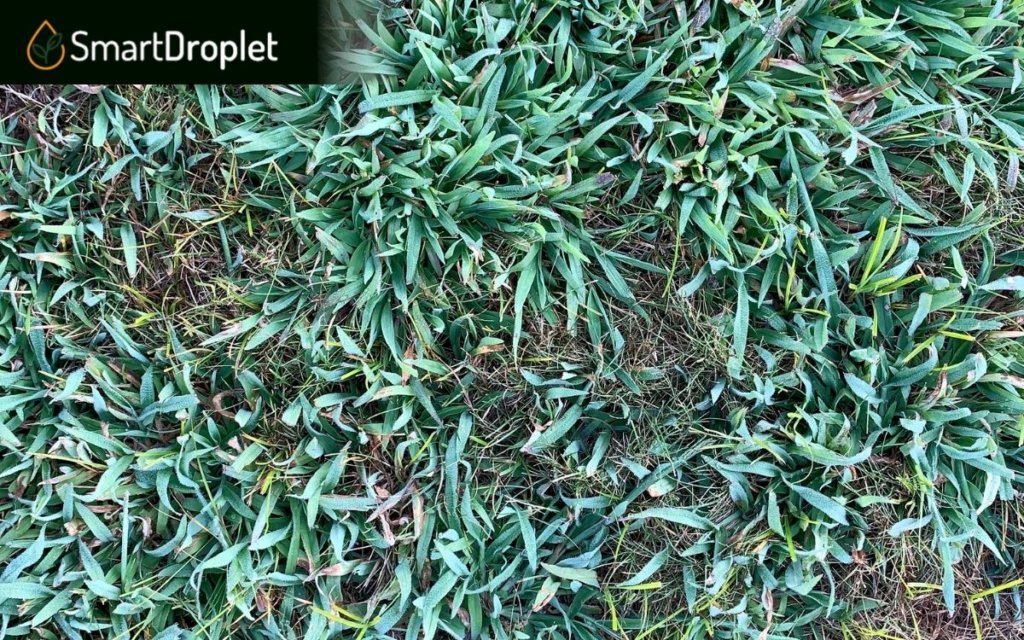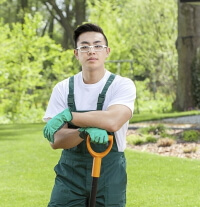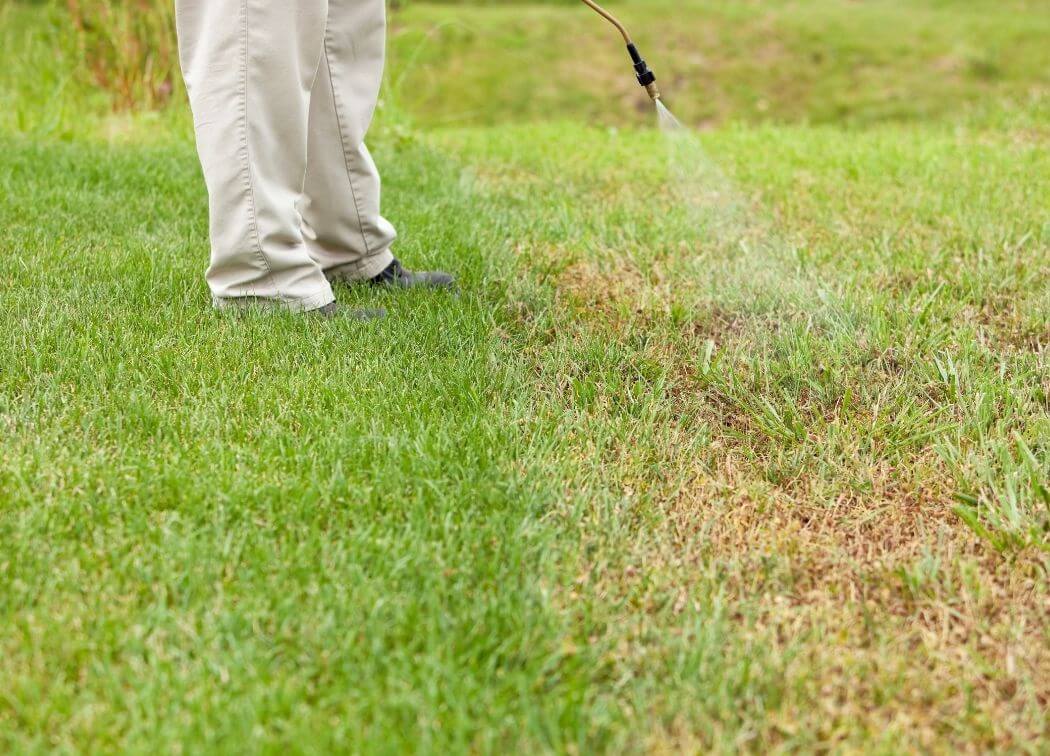Crabgrass is a tough, self-sufficient annual weed and seed that steals nutrients from other grass plants and leaves room for pests on your lawn.
Its growing season starts in early spring when the soil temperature rises between 55 and 70 °F. This heat initiates its germination cycle, allowing crabgrass seeds to wreak havoc on your lawn.
The best time for applying any crabgrass preventer is in early spring, before crabgrass starts germinating and when soil temperatures rise 55-70 °F. It will help if you put down pre-emergent herbicide before the rainy weather forecast, as rain will allow the pre-emergent to seep into the soil and stop crabgrass growing.
Some still allow the crabgrass seed to germinate despite ideal environmental factors: seasonal timing, months, and soil temperature.
However, there are some excellent crabgrass preventers, including:

Snapshot Granular

Syngenta Tenacity Turf Herbicide

Barricade 65 WDG Pre-Emergent Herbicide
It’s important to note that the right timing of applying crabgrass preventer depends greatly on what region and climate you are in.
Fortunately, these tips work wherever you are.
When to Apply Crabgrass Preventer
Timing is everything when preventing crabgrass from being allowed to germinate. It’s thus important to apply crabgrass preventer under these conditions:
- Season – Early spring when forsythia bushes start growing
- Between March and April
- Soil temperatures rise to about 55 °F (consult a soil thermometer or local monitoring)
- When the weather shows chances of rain (grass is still dry)
This infographic tells you everything you need to know:

Crabgrass is an annual grass, spreading via crabgrass seedlings.
This makes it harder to stop crabgrass from spreading and makes controlling these plants difficult once it’s fully grown.
Crabgrass is incredibly durable, resistant to foot traffic, and resilient to many different kinds of mowers. Removing grown crabgrass is a daunting task.
It is thus better to apply crabgrass preventer before it can germinate and keep you from planting new grass where it should grow.
Timing Tips to Put Down Crabgrass Pre-emergent Herbicide
Pre-emergent herbicides can help save your lawn from grassy weed types like crabgrass and other common lawn weeds like winter weeds, broadleaf weeds, and bluegrass (poa annua).
It’s important to nip these in the bud before they can turn your new lawn into a den of unwanted growth.
This is done by applying a crabgrass preventer exactly when needed.
Are you still confused about the right time to apply pre-emergent herbicide? Here are several pointers on when best to apply a crabgrass preventer on your lawn.
Early Spring Season
Crabgrass seeds drop in late summer and make their initial emergence when the weather gets warm during springtime. Rising temperatures ensure its growth.
This is because the sun’s warmth returns for the first time since winter, allowing plants, especially weeds, to grow and spread rapidly.
The best time to apply crabgrass preventer is thus between late March and early April. Herbicides such as Snapshot offer the most protection across the entire season.
If you miss this window, it is still possible to do it in May. When it comes to removing grass blades, it is better to apply pre-emergent late than to not apply it at all.
Make sure to apply a crabgrass preventer in spring to prevent crabgrass and other common lawn weeds from germinating. Apply “Scotts Turf Builder Halts Crabgrass” for protection all season. – Scotts
Warm Soil Temperature
Soil temperatures greatly impact the growth of grassy weeds. This is why crabgrass seed tends to start germinating when the soil warms at the start of spring.
Crabgrass becomes a problem when the soil temperature reaches 55 °F to 60 °F. The months of March and April are thus hot months when you need to be on alert for weed growth.
Crabgrass seeds start sprouting at 55°F but only really pick up at 70°F heat. They grow and sprout quickly. They leave thick patches that stand out, and not in a good way.
Climate, wind, and tree shade may affect your temperature readings, but reaching this heat level is still inevitable, meaning you need to stay ahead by monitoring temperatures.
Germinating crabgrass seeds often start near concrete slabs, steps, and houses. The heat from the sun gets trapped, heating the soil underneath. Apply crabgrass preventer here first.
Before or After Rain?
It is best to apply crabgrass preventer before the rain sets in. That way, the rain washes the herbicide, allowing it to seep into the soil.
The herbicide permeating into the soil will prevent the seeds from developing roots. Applying it after the rain prevents the water from bringing the chemicals underground.
Controlling weeds is largely trial-and-error, but you learn to get the right timing as you gain more experience. Applying a preventer to the lawn immediately before rainfall is ideal.
Water your lawn if rainfall does not appear 2-3 days after applying pre-emergent.
Pro tip: Closely monitor the weather forecast. For best results, lay down your crabgrass preventer a few hours before it is about to rain. Water your herbicides according to the label instructions if rain doesn’t fall within the next 2-3 days.
Read Herbicide Labels
Many lawn owners are wary about using a chemical product on their lawns. It’s just that their need to kill crabgrass outweighs the chemical ingredients involved in the process.
However, many chemical herbicides can stop the ability of crabgrass to germinate without being as deadly to other plant growth. Reading the labels helps you find the right one for you.
Every manufacturer uses their label directions to clue you in on the best timing for your application. Some products have short-term effects. Others last twice or thrice as long.
It’s best to apply crabgrass preventer that works in your environment and skill level. Short-term lets you plant sooner. The long term keeps you worry-free.
“Barricade can also serve as crabgrass control next season when applied in the fall. Dimension can be applied as early as the first of March” – Kansas City
Types of Pre-Emergents

There are 2 kinds of pre-emergent herbicides: short and long residual preventers. Applying a crabgrass preventer relevant to your experience level and current growth problem.
Lawn food (fertilizer) and pre-emergent herbicide often work hand-in-hand when keeping your lawn clear.
You can find the best pre-emergent products here.
The Best Short Residual Pre Emergent
Short residual pre-emergent herbicides usually last about 60 days after being applied. These are ideal for the mid-March to April period.
It is best for maximizing their effectiveness.
Some examples of these short pre-emergent herbicides on the market include Team, Tupersan Crabgrass Control, and Scotts Halts.
We included our favorite Scotts Halts herbicide below:
- Apply in spring to prevent crabgrass and problem weeds all season long
- Rain, snow or freezing weather after application won't affect product performance
- Apply in fall to prevent moss
Scotts Halts Crabgrass & Grassy Weed Preventer (10,000 sq. ft.)
- Only 1 application can prevent germination for the whole season.
- Applying in fall prevents winter weeds like poa annua from growing.
- Extreme weather conditions won’t expect herbicide performance
The Best Long Term Residual Preventers
There are crabgrass preventers that work better in the long term. These are useful for those unable to get the proper timing on their application cycle.
These preventers work because they aren’t as time-sensitive. Unlike the short-term preventers, which last about 2 months, these long-term preventers are made to endure.
You can spray them at any given point, and they will last you 4-8 months, keeping your lawn protected for the entire season.
Examples of these herbicides include Dimension and Snapshot. They’re practically spray-and-forget pre-emergents. You apply them once, and they serve you until you need to spray again.
Out of all the brands and variations on the market, I trust this Snapshot preventer the most:
- Up to 6-8 months of control for 111 broadleaf and grassy weeds
- Application rate: 2.3 to 4.6 lb per 1000 square feet
- Material must be applied before rainfall or irrigation
Snapshot 2.5 TG Granular Pre-Emergent Herbicide
- Keeps broadleaf weeds and grassy weeds away for 6-8 months
- Apply materials before watering or rainfall
- Active ingredients like isoxaben and trifluralin provide control over a broad spectrum of weeds
FAQs
Here are some of the most pressing questions when it comes to having to apply crabgrass preventers on your lawn.
-
Can I Use Pre-emergent to Kill Existing Weeds?
As the name implies, pre-emergents are herbicides good at preventing weeds, not killing those that have grown. That job falls to post-emergents, AKA weed killers.
Crabgrass preventers, such as the popular Scott’s Turf Builder Halts Crabgrass and Barricade, are ineffective against grown weeds. However, Dimension 2EW can take of young crabgrass.
-
When Should I Water After Applying a Pre-emergent?
Although the best advice is to let the rain do the watering after applying a crabgrass preventer, you’ll need to take it into your own hands after 2 to 3 days with no rainwater.
High soil moisture will be the vehicle that allows preventers to do their job properly. Ensuring the soil gets wet will allow the herbicide to seep into the soil and kill off weed grass seed.
-
Can You Apply Pre-emergent on Wet Grass?
While some brands like the Crabgrass Barrier encourage application on wet lawn growth, the average crabgrass pre-emergent is applied on dry grass to allow rainwater under the soil.
If you apply a crabgrass preventer on wet grass, it may end up sticking to it. Without rainwater, the herbicide will not stop crabgrass seed and will cling to your lawn.
If the rain misses its mark, water your lawn with a sprinkler to push the herbicide into the soil. If you don’t want to do this manually, an oscillating sprinkler can save you a lot of time.
We also have a handy guide on when it’s okay to mow wet grass, helping you time your pre-emergent application and cutting calendar.
-
How Long Do Crabgrass Pre-emergents Last?
Pre-emergents, when applied right and at the right time, can protect your lawns for quite a while. Depending on the brand and timing, it lasts anywhere from 2 to 4, even 6 months.
It depends on whether you use short-term preventers that last for 2 months or long-term preventers that last as long as 8 months.
The best brands prevent crabgrass from germinating while allowing other grass seeds to continue growing. I go over several grassy weed killers, such as Tenacity, here. -
How Often Can You Apply Crabgrass Pre-emergent?
With most weed prevention herbicides lasting somewhere between 4 and 6 months, you should apply a crabgrass preventer twice a year.
There may be around 2-6 months between applications to give your newly seeded lawns time to grow. You wouldn’t want to negatively impact the germination of non-weed grass.
While prevention is better than the cure, saving half your lawn is better than abandoning it to crabgrass.
This is where the post-emergent weed killers come in.
You can check out the ultimate guide on how to get rid of lawn crabgrass here.

Controlling Crabgrass Seeds Before Germination
To control crabgrass, timing is paramount for ensuring ideal results. These are the essential tips to apply crabgrass preventer with the perfect timing.
- Keep track of the soil temperature of your lawn with a soil thermometer or data from newspapers, universities, and monitoring platforms. Apply when the weather is 50-55°F.
- The best time to apply crabgrass pre-emergent is based on weather forecasts before the rain arrives. Ensure the grass is dry to allow the rain to bring the herbicide into the soil.
- Visual cues from other plants also hint that crabgrass’s growing season has begun. Forsythia bushes and dogwoods blooming mean that it is time to control crabgrass.
- Make sure to check the sides of your concrete surfaces. The trapped heat causes crabgrass to sprout faster than other weeds, which is now the season to kill new grass.
If you keep these steps in mind and stay 1 step ahead of the crabgrass, you’ll be able to safeguard your lawn and maintain its beauty and integrity.
Conclusion
It is crucial to apply a crabgrass preventer to keep from being overrun by grassy weeds. Doing it at the right time keeps your lawn healthy and the pesky crabgrass at bay.
Because your lawn deserves the best, and you deserve a rest for keeping the weeds at bay.




